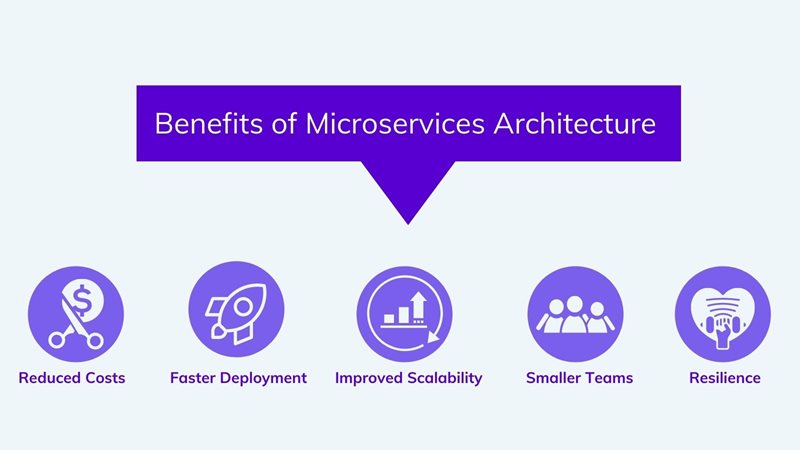Microservices architecture is an approach to developing software applications as a collection of small, independent, and loosely coupled services. Each service focuses on specific business capabilities and communicates with others through APIs. This architecture offers several benefits, along with certain challenges and implementation considerations.
Benefits of Microservices Architecture

Scalability: Microservices allow for scaling individual services independently based on demand, enabling better resource utilization.
Flexibility and Agility: Developers can work on small, independent services, making it easier to update, deploy, and maintain them without affecting the entire system. This fosters agility in development and deployment cycles.
Technology Diversity: Each service can be built using different technologies, languages, or frameworks, enabling teams to use the most suitable tools for specific functionalities.
Fault Isolation: If one service fails, it does not bring down the entire system, as other services continue to function independently.
Ease of Maintenance: Smaller codebases are easier to maintain and understand, facilitating quicker bug fixes and updates.
Challenges of Microservices Architecture
Complexity: Managing and coordinating numerous services can be complex, requiring a robust infrastructure and sophisticated orchestration tools.
Inter-service Communication: Communication between services involves network calls, which can introduce latency, failure points, and increased complexity.
Data Consistency: Maintaining data consistency across multiple services can be challenging, requiring careful design and implementation of distributed transactions.
Testing and Debugging: With multiple services interacting, testing and debugging across services can be more complex than in monolithic architectures.
Operational Overhead: Managing multiple services involves overhead in terms of monitoring, logging, and deployment, which requires specialized expertise.
Implementation Considerations

Design for Business Domain: Divide services based on business capabilities, ensuring each service is responsible for a specific functionality.
Service Boundaries: Clearly define service boundaries to minimize interdependencies and establish contracts for communication.
Containerization and Orchestration: Container technologies like Docker along with orchestration tools like Kubernetes simplify deployment and management of microservices.
API Gateway: Use an API gateway for handling incoming requests, managing authentication, and routing traffic to respective services.
Monitoring and Logging: Implement robust monitoring and logging solutions to ensure visibility into the performance and health of services.
Team Organization: Align teams around microservices to ensure ownership and responsibility for specific services, fostering autonomy and accountability.





Leave a Reply